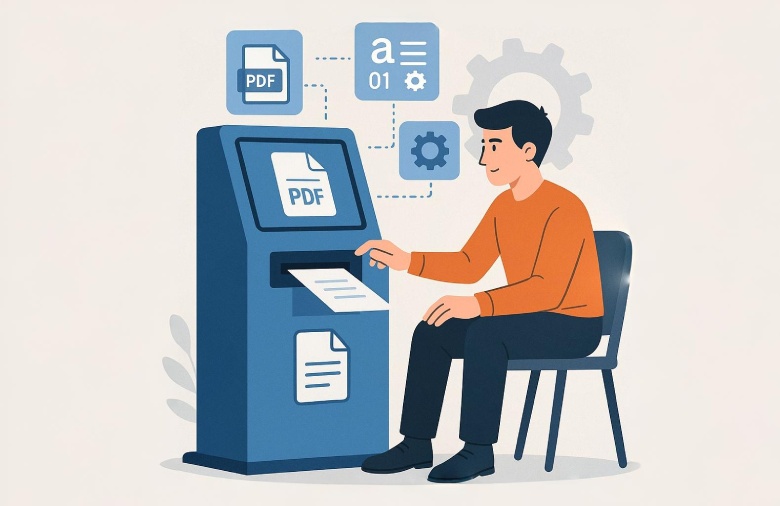
What Role Does Micro-Frontend Architecture Play in Modernising Enterprise Web Development Services in Australia?
Digital evolution in the Australian landscape is innumerous. Across the continent, enterprises in the banking, healthcare, education and retail sectors are rapidly in a bid to stay competitive and relevant. Modernization of web application development services has a vital part in this transformation.
The traditional monolithic front-end ways are gradually replaced by micro frontend architecture, which is a modular and agile approach, but also supports innovation and enables to provide a better user experience.
If you are an organization investing in web application development services, micro frontend architecture is an approach that is forward thinking, and takes care of complexity, reduces bottlenecks to development and helps in scaling faster.
It enables enterprises to create applications that have scalability, maintainability and featurefulness, and relate the IT capabilities of the enterprise with the business changes.
Knowing Micro-Frontend Design
Micro-frontend architecture applies the principles of microservices (which have been around for a while now back end only) to the front end. In micro frontend setup, we have a web application divided into smaller, self contained units or say micro frontends. These units are developed, tested and deployed independently by different teams and these units collectively make the full user interface.
Each one of these front end components can be built with different frameworks (such as React, Angular, Vue or even vanilla JS) and integrated together without any issue. It makes development parallel, reusable and enables independent deployable components that makes it suitable for large scale applications which run in enterprise environments.
The Significance of Micro-Frontends in Enterprise Web Development
-
A quicker time to market and increased agility
Developing in micro frontend architecture is one of the biggest advantages because of development team agility. Australian enterprises operating in sectors such as fintech, e-commerce, logistics and other similar dynamic sectors are always under pressure to innovate fast, often powered by robust digital product engineering services. Micro-frontend interfaces are quite nice as far as multiple teams work on different features at the same time without stepping on each other’s toes.
The parallelism does shorten development cycles that creates less dependency conflicts, and it also enables businesses to release updates with greater speed, which is a very important competitive advantage in the digital era.
-
Enhanced Scalability in Complex Use Cases
As applications become bigger and bigger, traditional monolithic front ends become too hard to manage. It is especially valid for the enterprise web portals that serve thousands of users having different features and workflows. With micro-frontends, what we’re able to do is team or break up individual pieces of an application and scale them as required separately.
For example, an app for an Australian bank can split the module for loans, credit cards and the personal banking dashboard into three separate micro front ends. The application is a collection of each module that can either be scaled, updated, or debugged without affecting the rest of the application so complex needs of the customer can also easily be met.
-
Increased Specialization and Team Autonomy
Usually, enterprise teams consist of several subteams with knowledge in a variety of technologies. With micro frontends teams can get the freedom to choose their tech stack, often leveraging the expertise of a React.js Development company, and release schedule by obeying shared integration contracts. Specialization and autonomy is what lends maximum morale and productivity support to a workforce
In the Australian situation where many skilled front-end developers have the opportunity to work remotely or across time zones this decoupled approach means you can collaborate better and avoid bottlenecks. It fits well with large scale digital service providers distributed development models.
-
Simpler Onboarding and Maintenance
It’s notorious to maintain a monolithic codebase. Changes, no matter how slight, have unintended ripple effects when it comes to QA resulting in longer time. Micro Front ends change the modules individually which means debugging and testing is easier as well as updating.
Moreover, developers join a project quite often — and this happens very frequently in Australia’s fast growing tech sector — and onboarding a new developer on an already well scoped micro frontend vs. onboarding new developers on an entire monolith is much easier.
-
A Better User Experience
Users of today are expecting a seamless and responsive experience. With progressive loading (fetching what’s needed when it’s needed), micro frontends can now also optimise load times as well. And they can also help rollbacks much faster if a particular feature misbehaves, keeping downtime to a minimum, and end user trust in the system intact.
As Australian enterprises, especially those in the customer centric industries such as retail, hospitality and telecommunications, it is critical to ensure that web applications are consistently and performantly delivered to the user.
Practical Use in the Australian Market
Finance and Banking
Australia’s big ‘four’ banks NAB, ANZ, Westpac and Commonwealth Bank are all making big investments in digital platforms. Micro frontends make it possible for these institutions to release new digital features, be it the expense tracking, credit scoring, or a chatbot interface, without the need of revamping the whole system.
Medical Care
Australia's micro frontend implementation is a prime example of where having smaller encapsulated services to build micro frontends leads to separation of concerns, allows for greater iterability, have less impact on systems and greatly decreased development time.
Portals for the Government
Many times, government services such as myGov, ATO or state specific portals offer a number of features in one platform. With Micro Frontends these agencies can incrementally modernise for better accessibility and with greater ease of integrating third party services without risking the intactness of the bigger picture.
Integration Techniques and Difficulties
Micro frontend architecture is extremely good but no one told integration is also a challenge which also needs planning. How will enterprises compose those micro frontends (client side, server side or edge side), how will routing be managed, how shared states or global styles to be handled is another decision to be made.
-
Simplest form of iFrames which is limited interactivity and styling control.
-
Loading and execution of referring remote components is called JavaScript Bundles.
-
Web Components, the use of native browser APIs so that these work well, feel like they belong, and are seamless across frameworks.
-
Webpack 5’s Module Federation – runtime sharing of code between independent apps, saves on duplication and improves load performance.
Selecting an integration method that is performant and resilient is especially important in Australia where digital infrastructure quality varies significantly between regions and accessibility to Australians in urban and rural areas is impacted.
Prospects for the Future: Micro-Frontends' Function in Australia's Digital Strategy
Increasing government initiatives, VC funding, and customer demand for digital innovation together are increasing investments in web development in Australia, which looks modular, scalable and service based for the future. With the vision of allowing business users to experiment, iterate and innovate without the constraints of legacy codebases, this is where micro frontend architecture enters the game.
With the traction of AI, IoT and immersive web experiences, micro front ends would have an advantage to support these technologies without full reengineering. Those enterprises that adopt this architecture today will be more prepared than others to address tomorrow's digital disruptions.
Conclusion
Micro frontend architecture is one of the latest trends that make enterprise web development services across Australia up to the mark. Complex interfaces are broken down to practical, scalable, and independently deployable components. It is extraordinarily flexible, fast, and resilient. In a business world that needs to be agile, with user driven digital experiences, this architecture is more than a technical upgrade, it is a strategic imperative.
With more and more Australian enterprises looking to modernise their digital propositions, reaching for adoption of micro-frontend architecture for sustaining competitive, future ready web applications may be the differentiator. The full benefits of this transformative approach will only be reaped by investing in experienced web development partners and in the creating agile, cross functional teams.
Author Bio : Bhumi Patel has vast experience in Project Execution & Operation management in multiple industries. Bhumi started her career in 2007 as an operation coordinator. After that she moved to Australia and started working as a Project Coordinator/ Management in 2013. Currently, she is the Client Partner - AUSTRALIA | NEW ZEALAND at Bytes Technolab - a leading product engineering company australia, where she works closely with clients to ensure smooth communication and project execution also forming long term partnerships. Bhumi obtained a Master of Business Administration (MBA) in Marketing & Finance between 2005 and 2007.
Author Headshot:








